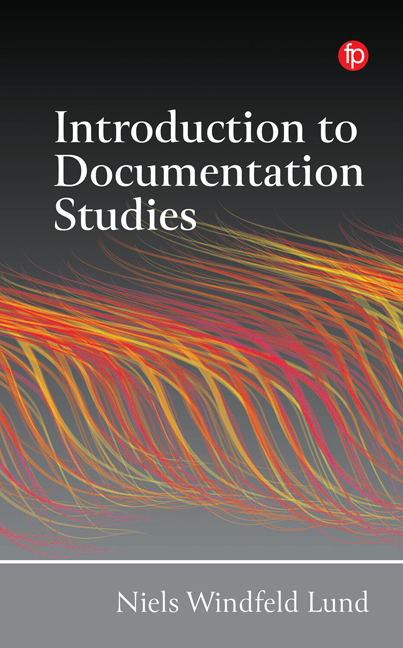 Introduction to Documentation Studies
Introduction to Documentation Studies Published online by Cambridge University Press: 28 March 2024
Introduction
Count Franz von Walsegg was born on January 17, 1763 in the Austrian castle of Schloss Stupparch, a member of a noble family, and died in November 1827. In 1786 he married Anna Theresa Prenner Edlen von Flammberg, then aged 15 years, a member of another noble family. They had been married for only four years when she died on February 2, 1791, at the age of 20. The count was 28 years old.
Count Franz von Walsegg was a part of the nobility subsystem, meaning that he belonged to a group of people normally born as members of a social order ranked just below the royal order. They needed to document, to communicate, and to inform themselves, their peers, and the surrounding society that they were noble persons. That usually meant:
1 having an extended family, an aristocracy;
2 for each member of the family, having a title indicating their position in the nobility;
3 owning property and living in stately homes;
4 having servants;
5 having a court, like the royal court, with cultural activities.
In order to maintain their residences, gardens, and cultural activities, they needed the support of many highly skilled people such as architects, painters, sculptors, composers, musicians, singers, etc. Today, in the 21st century, we think of these people as artists creating original artworks. From the Middle Ages until late 18th century, architects and others were conceived as skilled craftsmen serving the nobility, the imperial courts, and the churches by designing buildings and gardens and providing powerful families with paintings, sculptures, and music for any occasion at their request. The resulting documents, such as castles, gardens, paintings, and music, were considered the creations of the noblemen, not the products of the actual architects or composers. The documents were also considered the property of those who commissioned them (Goehr, 2007, 176ff).
Following this tradition, Count von Walsegg had an extensive cultural activity at Schloss Stupparch, especially in music (Wolff, 1994, 132). Every Tuesday and Thursday, there were three hours of quartet playing. The count had his own quartets with professional musicians, he himself also played the violoncello in string quartets and the flute in wind ensembles.
To save this book to your Kindle, first ensure [email protected] is added to your Approved Personal Document E-mail List under your Personal Document Settings on the Manage Your Content and Devices page of your Amazon account. Then enter the ‘name’ part of your Kindle email address below. Find out more about saving to your Kindle.
Note you can select to save to either the @free.kindle.com or @kindle.com variations. ‘@free.kindle.com’ emails are free but can only be saved to your device when it is connected to wi-fi. ‘@kindle.com’ emails can be delivered even when you are not connected to wi-fi, but note that service fees apply.
Find out more about the Kindle Personal Document Service.
To save content items to your account, please confirm that you agree to abide by our usage policies. If this is the first time you use this feature, you will be asked to authorise Cambridge Core to connect with your account. Find out more about saving content to Dropbox.
To save content items to your account, please confirm that you agree to abide by our usage policies. If this is the first time you use this feature, you will be asked to authorise Cambridge Core to connect with your account. Find out more about saving content to Google Drive.